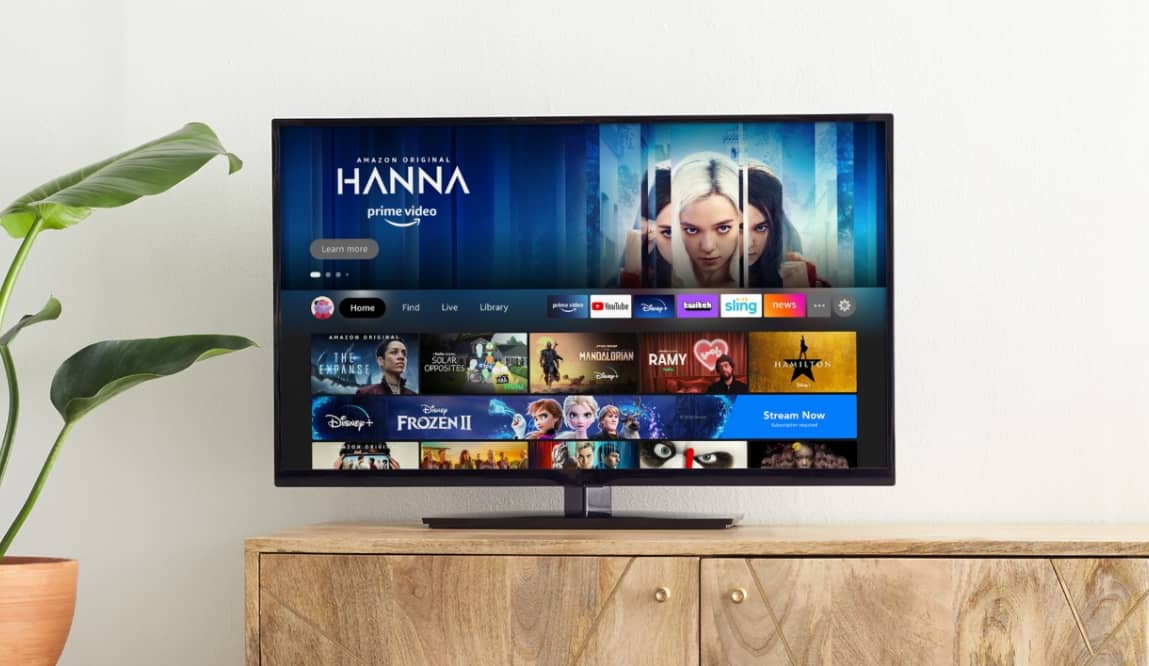Six things to consider before you buy a new TV on Black Friday

The new Amazon Fire TV interface, which includes user profiles.
Amazon
TVs have gotten really good, and a few hundred bucks can go really far if you’re upgrading from a TV that’s more than a decade old. But, if you want to buy a TV that will keep impressing you for another decade, you might want to look for a couple of things that matter.
So if you’re planning to grab a new TV on Black Friday, there are a few things to consider before you buy.
HDR
HDR, or high-dynamic range, can be a little confusing. There are several standards, but in general a TV with HDR, combined with HDR content from a service like Netflix or Amazon Prime TV, can show a clearer picture in dark or bright scenes.
But sometimes a TV doesn’t actually get bright enough to make a huge difference. So, even if you see “HDR” on the box, check out the brightness level as well — it’s typically represented as “nits.” According to Consumer Reports, which tests far more TVs than I have, you want a TV with at least 600 nits of peak brightness. Go up to 1,000 nits for the best HDR. So, if your budget TV has somewhere around 100 to 300 nits, the picture won’t be as good
Ultra HD vs. UHD vs. 4K
These are just names for the same thing, and it doesn’t mean that much If you’re shopping for a 4K TV, that means you’re shopping for a Ultra HD or UHD TV. That simply means the resolution is 3,840 x 2,160 pixels.
Full HD (FHD) means 1080p, or a resolution of 1,920 x 1,080.
Most modern TVs have 4K displays, but some super cheap ones will just be FHD.
How many HDMI ports does it have?
Check how many HDMI ports the TV has. If you have a family with a game console, a streaming stick like the Amazon Fire TV or Roku and a cable box, you’re going to need at least three HDMI ports. If you add in a sound bar (a recommendation later in this guide), you’ll need four. Most TVs should have enough, but sometimes special models released on Black Friday skimp on this feature. And you’ll want five if you plan to add additional equipment, like a Facebook Portal or any other gadget.
Software
Almost all TVs are “smart” in some regard now and run different versions of software depending on the brand you buy. Samsung has its own software. LG has does too. Amazon builds Fire TV into some sets and there are lots of TVs that run Roku software. Each has its strengths and weaknesses, so try to play around with the TV before you buy it. It’s possible the software won’t matter much if you use a lot of Apple TV or plan to mostly use a game console, but if you’re a big fan of Roku or Amazon or typically like Samsung software, consider this before you buy your TV, too.
OLED vs. LCD/LED
OLED screens are the best, with each individual pixel capable of lighting up instead of backlights that brighten different sections of the screen. This helps with picture quality. But don’t, rule out more traditional LCD/LED screens if you’re on a budget. That’s what you’ll probably find in most of the more affordable TVs during Black Friday. They’re still really good and can typically get brighter than OLED, which makes them a better choice if you’re putting them in a room that gets a lot of light during the day.
Put a soundbar in your budget
Most TVs have bad speakers. Now that TVs are so thin, there’s not a whole lot of room for big speakers that give you enough bass and balance. So, you end up with a speaker that plays some parts of a movie or TV show really loud and some parts that are too quiet. One way to solve this is by considering a soundbar. Prices range from a hundred bucks or so — I have a roughly $150 Vizio surround-sound model I bought a few years ago that works great — to more expensive options like the $799 Sonos Arc, which sounds awesome but may cost more than your TV.